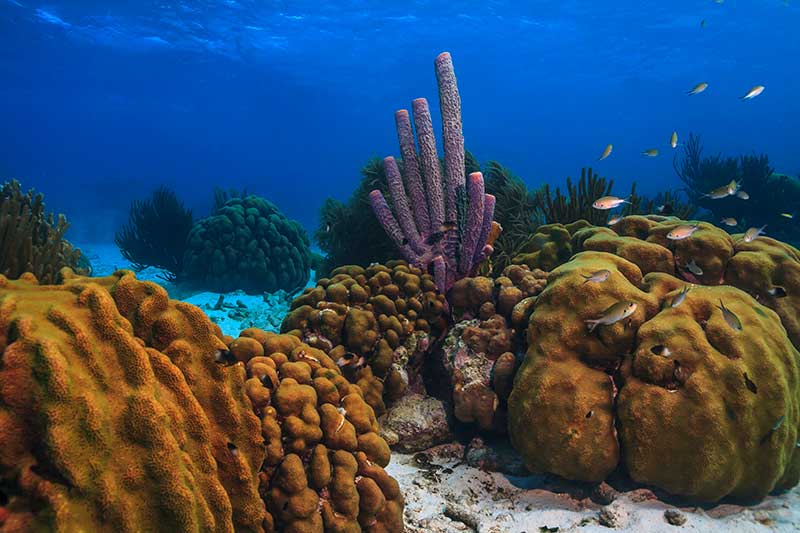Although Stony Coral Disease is sweeping through the Caribbean region, Bonaire is still free of this high-mortality coral disease.
About Stony Coral Disease.
Stony Coral Disease, more properly known as Stony Coral Tissue Loss Disease (SCTLD), was first identified off the southeast coast of Florida in 2014. By 2019, it had spread along the coastline of Florida to the Florida Keys but now has appeared in many locations around the Caribbean region.
Stony Coral Disease destroys the soft tissue of over 30 species of reef-building corals. This can result in the mortality of the coral within weeks or months of being infected. Different species of corals appear to have varying susceptibility to the disease. However, because the disease is regarded as potentially the deadliest coral disease ever recorded, and has a rapid spread, the island of Bonaire is preparing for the arrival of Stony Coral Disease with actions points as to how visitors who use the Bonaire Marine Park can help mitigate this disease from arriving on the island.
How transmission can occur.
A study this year suggested that the spread of the Stony Coral Disease is likely transmitted in the water column, and could be facilitated by ballast water from ships, due to several cases of the disease crossing currents in the opposite direction that they would flow. To minimize the transmission of Stony Coral Disease throughout the region, officials are now calling for extreme caution for divers who are in and around infected corals. Divers are strongly urged to fully disinfect their dive gear to avoid the spread of the disease. If a coral is suspected of being infected, please report this to STINAPA immediately.
What you can do to help keep Bonaire free of this high-mortality coral disease.
For all visitors who plan to enjoy Bonaire’s waters, STINAPA suggests two action points which everyone can do:
 1) Disinfect your dive (or other watersports) gear! Use a 1% bleach solution to totally decontaminate your equipment before diving or snorkeling or enjoying any other watersport for at least ten minutes. Then rinse the gear in freshwater. You can do this overnight. This is especially important if you have been diving or snorkeling, windsurfing, or kiteboarding in an area that has Stony Coral Disease. Please be sure to disinfect your equipment before you transport your watersports equipment to Bonaire.
1) Disinfect your dive (or other watersports) gear! Use a 1% bleach solution to totally decontaminate your equipment before diving or snorkeling or enjoying any other watersport for at least ten minutes. Then rinse the gear in freshwater. You can do this overnight. This is especially important if you have been diving or snorkeling, windsurfing, or kiteboarding in an area that has Stony Coral Disease. Please be sure to disinfect your equipment before you transport your watersports equipment to Bonaire.
2) If you see any suspicious-looking corals, please try to snap an image and then send it to info@agrra.org (you may send a copy to STINAPA at info@stinapa.org) so they can review it to see if it might be Stony Coral Disease. Early detection is the key, as once it has arrived on Bonaire, options are limited. The earlier that the island is aware of a potential problem, the earlier intervention can be commenced. Please also send the following information with your image(s): the date, where you saw it (the dive site and more specific instructions such as “50 meters/yards north of the marked entrance”, the depth of the affected coral, and if you are able to identify the coral species or the species in the immediate area, please list them. Finally, provide your contact information as well as the photographer’s contact information.
STINAPA marine biologist, Roxanne Francisca, presented an excellent webinar on this topic this past June. We encourage you to watch this very informative presentation.
(Source: STINAPA)












